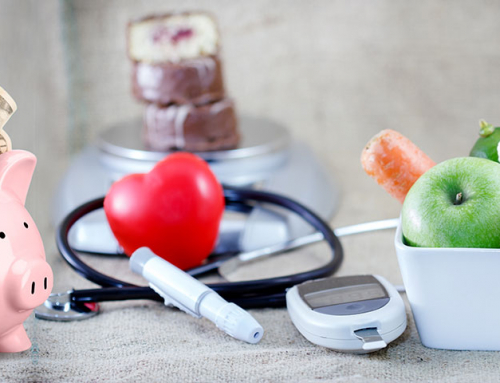Each year, the month of November is designated as Diabetes month. Many of you do not have the luxury of focusing on diabetes only one month a year since it never takes a break. I wanted to share some statistics and interesting information which may spike your interest in learning more about diabetes- then, now and in the future.
PAST:
- Diabetes has been recognized by the ancient Egyptians’ for over 3000 years. Hesa-Ra, an Egyptian physician described the first symptoms which included increased urination and severe emaciation.
- Sushruta and Charaka, two physicians from India described the initial differences between type 1 and type 2 diabetes. They thought type 1 was related to only the young and type 2 was related to weight. We now know this is not true.
- Doctors in the 1800’s understood the need for treatment of diabetes and created tests using chemicals to check for sugary urine. Prior to that in the 1700s there were actual tasters who tasted urine to check for sugar content. Even then physicians recognized the need for exercise and improved eating habits as treatment for diabetes.
- Oskar Minkowky and Joseph Von Mering, two researchers from France removed a dog’s pancreas which brought on diabetes. They connected insulin with treatment for diabetes.
- In 1916 – Elliot Joslin MD, a scientist from Boston wrote the first text book for the management of diabetes called The Treatment of Diabetes Mellitus. He focused on a fasting diet and regular exercise. He is often considered the father of diabetes and The Joslin Clinic in Boston still exists today. They lead the way in diabetes treatment.
- 1921 – Dr. Banting and his assistant Dr. Best injected pancreatic extract – insulin from a canine to treat diabetes in a dog. It was then refined to help a young boy suffering from diabetes. They received the Nobel Prize in medicine.
- 1940s – Intermediate insulin called NPH was developed by Novo Nordisk.
- 1942 – The sulfonylurea pills were developed to push out insulin from one’s own pancreas. This was the first type of oral diabetes medication. They are currently prescribed less due to cardiac side effects.
- 1969 – The original glucose meter was created for hospital use weighing 3 pounds and costing $650.
- 1970s – The first insulin pump was made to mimic how the body naturally releases insulin.
- 1979 – The A1C test was developed and is used to monitor diabetes control. It is now considered one method of diagnosing diabetes. Metformin was created in France and was brought to the U.S. in 1994. It remains the first line of oral medication in type 2 diabetes today.
- 1981 – The first home use glucose meters were offered. Shortly after Humulin [developed by Genentech] became the first biosynthetic insulin.
- 1993 – Large studies including the Diabetes Prevention Trial, Dream study and Act Now have all proven that if blood sugars are maintained at an A1C level of 7% or less, complications of retinopathy, nephropathy and neuropathy are less likely to occur. Check with your physician to see what A1C level is appropriate for you.
- 1996 – Fast acting insulin was released by Eli Lilly. This added more flexibility to meal timing.
PRESENT:
- The diabetes numbers from 2011 have not yet been updated but we do know these numbers have already increased in 2013. 26 million people in the U.S. have diabetes (type 1 or 2) and 7 million are unaware of it. The criterion includes a fasting blood sugar of 126mg/dl – two times /an A1C of 6.5% or a glucose tolerance test over 200mg/dl. Only 50% of people experience symptoms of diabetes. 79 million people in the U.S. have pre-diabetes which is a blood sugar of 100-125 mg/dl – if not corrected by life style changes will usually result in type 2 diabetes. 8.3% of the population has diabetes.
- There is a genetic predisposition in both type 1 and 2 diabetes but stronger in type 2. Type 1 is still considered a virus or an auto immune response. 5% accounts for type 1 and 95% accounts for type 2.
- The highest levels are seen in minorities such as Hispanics (13.8%), African Americans (18%), American Indian and Native Alaskan (16.1%) compared to Caucasians (10%).
- Diabetes costs in 2012 were $245 billion. $176 billion were direct medical costs and $69 billion were in decreased productivity.
- Diabetes complications – cost $5.4 billion for hospital in patients per year.
- Diabetes is the 16th most expensive chronic condition in the U.S. today.
- 1 in 3 American adults will develop diabetes in 2050 if the present trends continue.
- Most insurance plans including Medicare provide diabetes management training skills to all patients with diabetes. A prescription is needed by your physician. Request it if it is not offered to you since it is proven that education can help you get better control.
- There are present medical treatments with fewer side effects. There are pills which target your kidneys, superficial fat, and brain as well as gut hormones. They rarely cause hypoglycemia or weight gain. There are new injectables other then insulin which can assist weight loss as well as lower blood sugars.
- Recent reports from the European Association for Study of Diabetes stated that due to improved management of people with type 1 diabetes (last 20 years) life spans have significantly increased.
- There has never been a better time to manage your diabetes due to research, new medications and advanced technology along with the old fashioned life style changes!
FUTURE:
- Technology will remain huge in the future of diabetes. We already have continuous glucose monitoring (CGM) and pump therapy but research continues to search for the artificial pancreas.
- Inter Med patient handler – receives glucose readings wirelessly and transmits to a central server. The software evaluates and analyzes the information and sends a report to you and your provider.
- The ultimate goal for scientists today is a complete cure. More personalized treatment will be available including mapping your own genetics.
- I-pancreas is being developed which will fully automate blood glucose control.
- Weight loss surgery will continue to evolve as a treatment and possible cure for type 2 diabetes. By decreasing the fat levels in the organs the liver and pancreas seem to return to normal function. More time and research will tell us how long these benefits will last.
- Glucose sensing car- This is presently in development. An alarm will sound if blood sugars drop. A CGM worn by the patient transmits readings to a micro chip in the dash board.
- Research is currently being done on new inhaled insulin (Afrezza) – ultra rapid meal time insulin. It will be smaller in size and have fewer side effects on the lungs. They continue to work on a pill form of insulin which will not be destroyed by saliva.
There is so much to look forward to in the world of diabetes and the treatments. Stay informed. Diabetes month is a time to celebrate the advances in diabetes care but please stay involved all year long!
NOTE: Consult your doctor first to make sure my recommendations fit your special health needs.






Leave A Comment